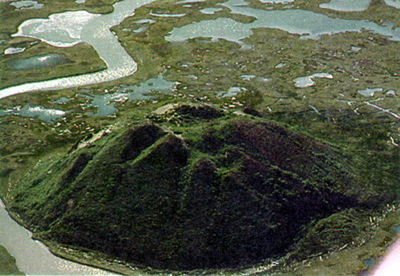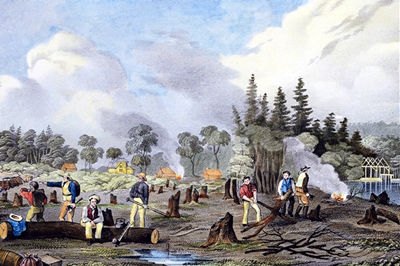Article
Pike
Pike is the common name for the group of 5 species of predaceous freshwater fish with elongated snouts, sharp teeth, cylindrical bodies and forked tails, belonging to family Esocidae, order Esociformes, class Actinopterygii.

Enter your search term
Signing up enhances your TCE experience with the ability to save items to your personal reading list, and access the interactive map.
Create AccountArticle
Pike is the common name for the group of 5 species of predaceous freshwater fish with elongated snouts, sharp teeth, cylindrical bodies and forked tails, belonging to family Esocidae, order Esociformes, class Actinopterygii.
"https://d2ttikhf7xbzbs.cloudfront.net/media/media/b3274c7c-a583-453e-9df1-19e86cd30f1d.jpg" // resources/views/front/categories/view.blade.phphttps://d2ttikhf7xbzbs.cloudfront.net/media/media/b3274c7c-a583-453e-9df1-19e86cd30f1d.jpg

Article
Most are either "soft" pines with 5 needles per shoot or "hard" pines with 2-3 per shoot. The most familiar soft pines are western white pine (P. monticola) of BC, and eastern white pine (P. strobus), east of Manitoba. Others include limber pine (P. flexilis) and whitebark pine (P.
"https://development.thecanadianencyclopedia.ca/images/tce_placeholder.jpg?v=e9dca980c9bdb3aa11e832e7ea94f5d9" // resources/views/front/categories/view.blade.phphttps://development.thecanadianencyclopedia.ca/images/tce_placeholder.jpg?v=e9dca980c9bdb3aa11e832e7ea94f5d9

Article
A pingo is an ice-cored hill typically conical in shape, growing and persisting only in PERMAFROST. The word "pingo" is of Inuit origin and was first used in the English-language literature by the botanist Alf E.
"https://d2ttikhf7xbzbs.cloudfront.net/media/media/5e658751-a56e-4535-9950-f641ec565a97.jpg" // resources/views/front/categories/view.blade.phphttps://d2ttikhf7xbzbs.cloudfront.net/media/media/5e658751-a56e-4535-9950-f641ec565a97.jpg

Article
A Pinky Schooner was an ancient type of vessel adapted to a primitive sloop or schooner rig in the British North American colonies and widely used in the Maritime provinces until the early 1900s. Often less than 14 m long, they were cheap to build and ideally suited for fishing.
"https://development.thecanadianencyclopedia.ca/images/tce_placeholder.jpg?v=e9dca980c9bdb3aa11e832e7ea94f5d9" // resources/views/front/categories/view.blade.phphttps://development.thecanadianencyclopedia.ca/images/tce_placeholder.jpg?v=e9dca980c9bdb3aa11e832e7ea94f5d9

Article
As each new area of Canada was opened to European settlement, pioneers faced the difficult task of building homes and communities from the ground up. Pioneer life revolved around providing the basic necessities of existence in a northern wilderness — food, shelter, fuel and clothing. Pioneering life was integral to family life and provided social stability for the settlement of a larger population across the country.
"https://d2ttikhf7xbzbs.cloudfront.net/media/media/e4a05698-f812-4056-9de1-b60785850314.jpg" // resources/views/front/categories/view.blade.phphttps://d2ttikhf7xbzbs.cloudfront.net/media/media/e4a05698-f812-4056-9de1-b60785850314.jpg

Article
The Pipeline Debate, 8 May-6 June 1956, was one of the most famous confrontations in Canadian parliamentary history.
"https://d2ttikhf7xbzbs.cloudfront.net/media/media/5b52b570-6e9b-476a-94a9-af4ca135ac51.jpg" // resources/views/front/categories/view.blade.phphttps://d2ttikhf7xbzbs.cloudfront.net/media/media/5b52b570-6e9b-476a-94a9-af4ca135ac51.jpg

Article
Pipit is the common name for some birds of the family Motacillidae, which also includes wagtails.
"https://development.thecanadianencyclopedia.ca/images/tce_placeholder.jpg?v=e9dca980c9bdb3aa11e832e7ea94f5d9" // resources/views/front/categories/view.blade.phphttps://development.thecanadianencyclopedia.ca/images/tce_placeholder.jpg?v=e9dca980c9bdb3aa11e832e7ea94f5d9

Article
Piracy is traditionally defined as the seizure and robbery of craft at sea or in the air. Though piracy had only a small role in Canada’s history, it has been the subject of legendary tales over the years. Pirates traversed the Atlantic coast of the country during the 17th and 18th centuries, plundering and causing mayhem wherever they went. Stories about pirates like Peter Easton and Bartholomew Roberts remain a part of local histories. While maritime piracy is no longer a significant threat in Canada, it remains so in parts of Asia, Africa, South America and Central America. The Canadian Armed Forces have assisted in anti-piracy missions in various parts of the world. In the modern age, piracy has taken on new forms, such as virtual crime and digital theft. Online piracy poses threats to the Canadian people, industries and economy.
"https://development.thecanadianencyclopedia.ca/images/tce_placeholder.jpg?v=e9dca980c9bdb3aa11e832e7ea94f5d9" // resources/views/front/categories/view.blade.phphttps://development.thecanadianencyclopedia.ca/images/tce_placeholder.jpg?v=e9dca980c9bdb3aa11e832e7ea94f5d9

Article
A pit house is a type of dwelling historically used by various Indigenous peoples living in the Plateau region of Canada. Partially built into the ground, pit houses provided warmth and shelter during the winter season. While pit houses no longer serve as common dwellings, they retain cultural significance for many Indigenous peoples. Archeological remains and replicas of pit houses can be found in various parts of Canada. (See also Architectural History of Indigenous Peoples in Canada.)
"https://d2ttikhf7xbzbs.cloudfront.net/media/media/f78eb160-4435-47f0-b8d4-d0694aa6ac55.jpg" // resources/views/front/categories/view.blade.phphttps://d2ttikhf7xbzbs.cloudfront.net/media/media/f78eb160-4435-47f0-b8d4-d0694aa6ac55.jpg

Article
Tropical Asian and N Australian pitcher plants of the genus Nepenthes belong to the family Nepenthaceae. The Australian flycatcher (Cephalotus follicularis) of SW Australia is the only species of the family Cephalotaceae.
"https://development.thecanadianencyclopedia.ca/images/tce_placeholder.jpg?v=e9dca980c9bdb3aa11e832e7ea94f5d9" // resources/views/front/categories/view.blade.phphttps://development.thecanadianencyclopedia.ca/images/tce_placeholder.jpg?v=e9dca980c9bdb3aa11e832e7ea94f5d9

Article
Canada has about 350,000 official place names. These include names of populated places, water bodies (e.g. lakes) and geographical features (e.g. mountains).
"https://d2ttikhf7xbzbs.cloudfront.net/media/media/26c8ac6d-be78-4acc-9097-9854b0762516.jpg" // resources/views/front/categories/view.blade.phphttps://d2ttikhf7xbzbs.cloudfront.net/media/media/26c8ac6d-be78-4acc-9097-9854b0762516.jpg

Editorial
The following article is an editorial written by The Canadian Encyclopedia staff. Editorials are not usually updated. In 1885, smallpox gripped the city of Montreal.
"https://d2ttikhf7xbzbs.cloudfront.net/media/media/9fb27681-8151-488a-a060-ebd52923eb52.jpg" // resources/views/front/categories/view.blade.phphttps://d2ttikhf7xbzbs.cloudfront.net/media/media/9fb27681-8151-488a-a060-ebd52923eb52.jpg

Macleans
The new Maritime quest for unity began during those achingly anxious hours when Quebecers counted their ballots and decided the fate of the entire country. As the tally in last October's referendum seesawed back and forth, Liberal MP George Rideout, a former mayor of Moncton, N.B.This article was originally published in Maclean's Magazine on February 5, 1996
"https://development.thecanadianencyclopedia.ca/images/tce_placeholder.jpg?v=e9dca980c9bdb3aa11e832e7ea94f5d9" // resources/views/front/categories/view.blade.phphttps://development.thecanadianencyclopedia.ca/images/tce_placeholder.jpg?v=e9dca980c9bdb3aa11e832e7ea94f5d9

Macleans
This article was originally published in Maclean’s magazine on December 29, 1997. Partner content is not updated. Like thousands of other Canadians last week, Krista Kitchen was headed home for the holidays. Flying into Fredericton from Toronto aboard Air Canada Flight 646, the 23-year-old University of Western Ontario student was looking forward to Christmas with family and friends.
"https://development.thecanadianencyclopedia.ca/images/tce_placeholder.jpg?v=e9dca980c9bdb3aa11e832e7ea94f5d9" // resources/views/front/categories/view.blade.phphttps://development.thecanadianencyclopedia.ca/images/tce_placeholder.jpg?v=e9dca980c9bdb3aa11e832e7ea94f5d9

Article
The diameter of a world is a significant value because, given the same densities, the surface gravity will vary roughly with the diameter. A diameter of 350 km is the approximate dividing line between the larger, near-spherical bodies and the smaller objects of irregular shape.
"https://d2ttikhf7xbzbs.cloudfront.net/media/media/4c1c6f4c-e6fb-43ec-a6ab-1611826eba6d.jpg" // resources/views/front/categories/view.blade.phphttps://d2ttikhf7xbzbs.cloudfront.net/media/media/4c1c6f4c-e6fb-43ec-a6ab-1611826eba6d.jpg
